DIY rugs from scraps of fabric
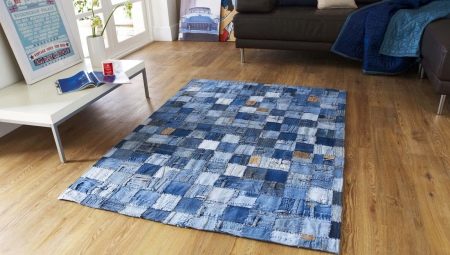
Decorating home with homemade items has long become popular and has not lost its relevance for many years. On the contrary, all new types of creativity appear. But if there are more complex options that require certain skills and talent, then almost everyone can make rugs from scraps of fabric with their own hands. And as a result, you can get a very beautiful product.
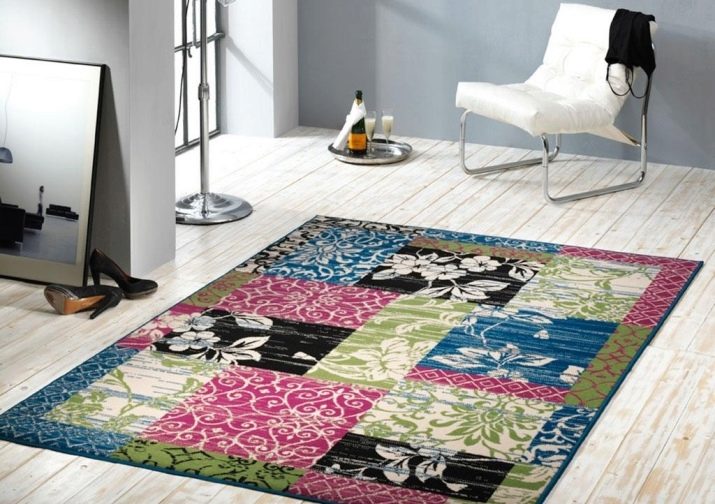
Carpet making techniques
There are a huge number of techniques that allow you to find your own version, which seems easier or for it there are all the necessary materials. You can make a rug that fits perfectly into the interior of the nursery, kitchen or corridor.
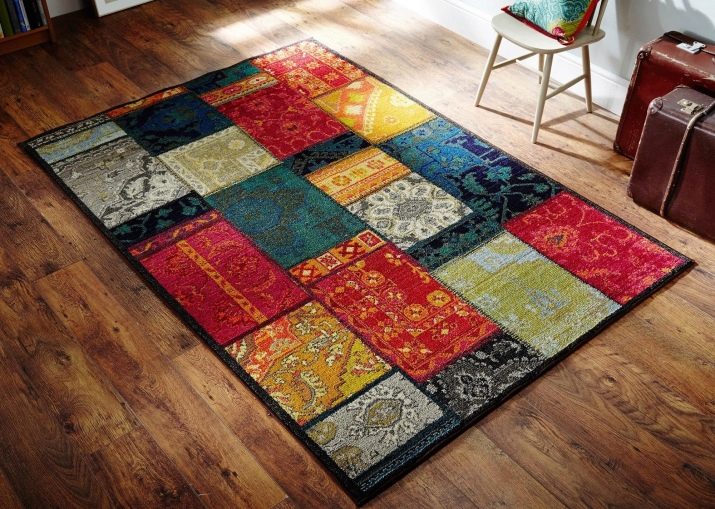
Consider the options that are most often used by needlewomen.
Knitting
Many women know how to crochet various napkins, hats and other items of clothing, which means they are well acquainted with the principles of crocheting. For such craftswomen, it will not be difficult to create a knitted rug. The only difference is that it will consist of long and thin strips of fabric.
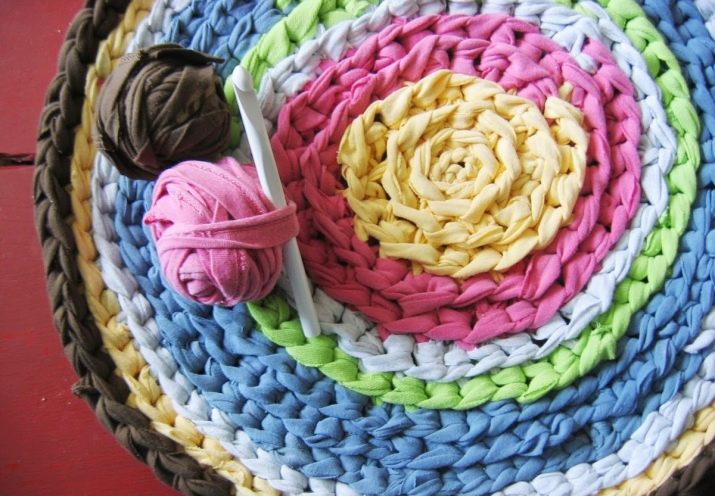
You can crochet, but large - 6-10 mm. First, a pigtail is tied out of 5-6 air loops. The product is knitted in a circle, where the diameter of each subsequent circle increases. The result is a nice round rug that can beautify a kid's room or bedroom.
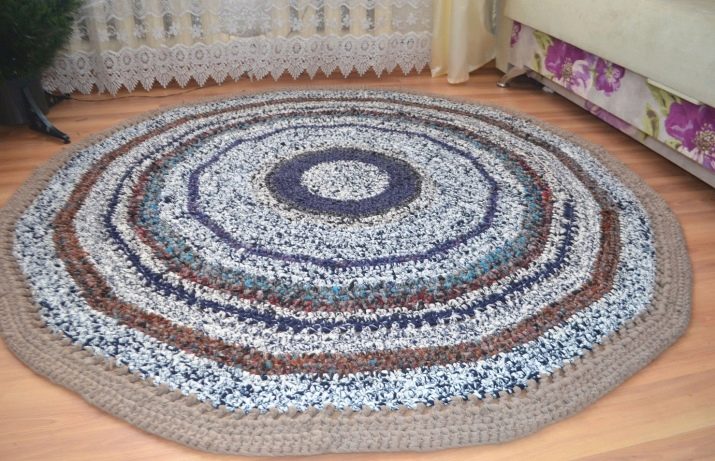
Weaving
Getting started will be similar to the previous option. First you need to cut into long strips of fabric. Moreover, their length will depend on the size of the rug you want to get in the end. Next, a pigtail is weaved from the strips, and then twisted tightly in a circle, fastening with threads in each row so that the rug does not fall apart. If you need a square shape, then weave 4-6 braids and fasten them together.
The thicker and softer the fabric, the more pleasant to the touch the future rug will be.
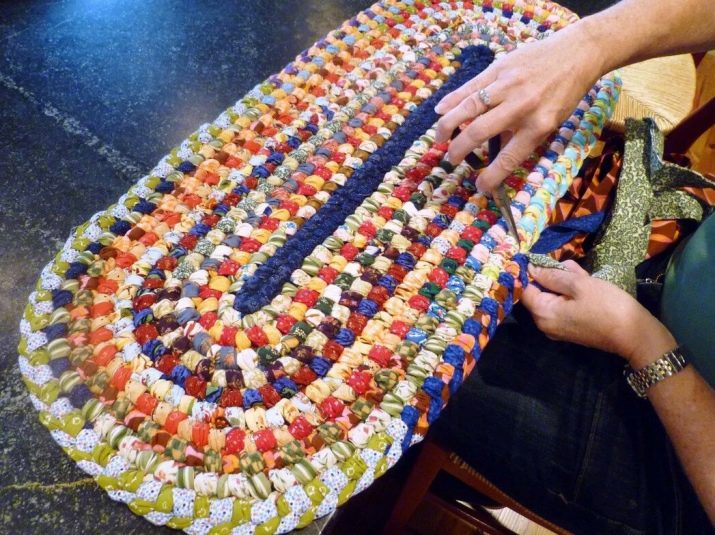
Stitching
This option includes a variety of products. All blanks are simply stitched together. These can be patches of one color or two or three. If you are planning some kind of pattern from shreds, you must first make a sketch on which you can number the pieces of fabric so that it is clear what to sew in what sequence. At hand, the master can revive any animal, grow a beautiful flower. But if a beginner gets down to business, it is better to choose a simpler pattern.

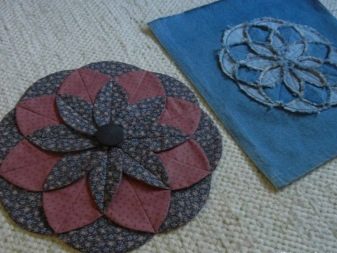
There is an interesting option to make a soft and voluminous rug. To do this, you need to prepare pompons, that is, place a filler in the scraps of fabric, and then sew up each of them. Then they should be sewn together. The result is a soft and beautiful rug. Especially children will like it.
In all variants, it is better to attach all elements to the base. Then the rug will retain its integrity. You can choose a variety of colors - at your discretion.

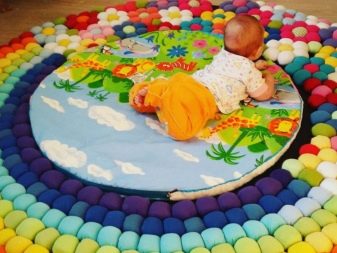
Patchwork
This technique is known to many. Its principle is to sew a wide variety of patches, and these can be fragments of fabric not just of different colors, but also with all kinds of patterns. But when selecting shreds, it is still better to maintain a certain balance so that the product does not look too clumsy. Therefore, the shreds must be prepared in advance. First you need to sew several elements in a row, make several such strips, and then connect them together.

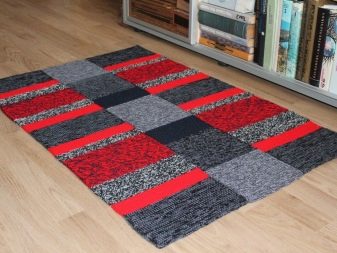
Lyapochikha
An interesting method that allows you to create voluminous bright products, both monochromatic and with various patterns. You can make the whole picture, after thinking over the plot. The work begins with the fact that you need to prepare the shreds. But the essence of the method is that a long patch is sewn in the middle, and then its ends on both sides. Thus, a volumetric structure is obtained. So, patches selected by color create patterns, and a beautiful fluffy rug is obtained. You can go a little differently - make the shreds shorter and sew on only one side. In any case, the method is interesting and allows you to create original things, not just rugs.
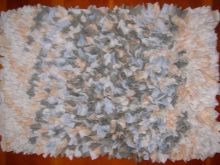
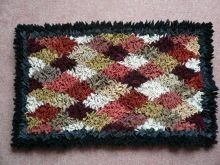
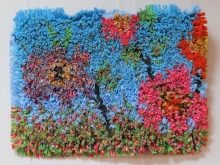
Selection and preparation of material
The convenience of making carpets at home is that you can use absolutely any things that you do not plan to wear and use. Thus, you can not get rid of old things, but breathe a second life into them. If you plan to do needlework in the future, you need to thoroughly prepare for this and conduct an audit in the closet. Any things will do: boring knitted sweaters, a worn denim jacket, a quilted robe, a soft fluffy sweater, a tapestry pillow cover. It would seem that this is just a collection of unnecessary old things, but each of them can become an irreplaceable part of the overall composition.
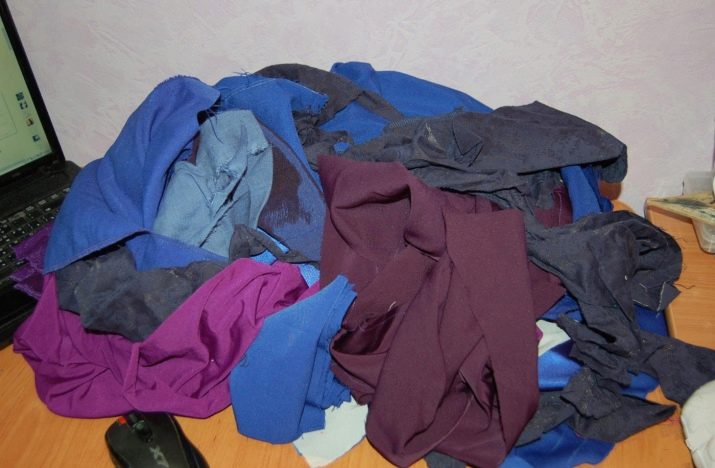
When the revision of the cabinet is completed, it is necessary to prepare shreds of different shapes: these can be triangles, squares, long strips (wide and narrow).
It is better to distribute all the resulting fabric for crafts into bags: knitwear in one, wool in another, corduroy in a third, and so on.
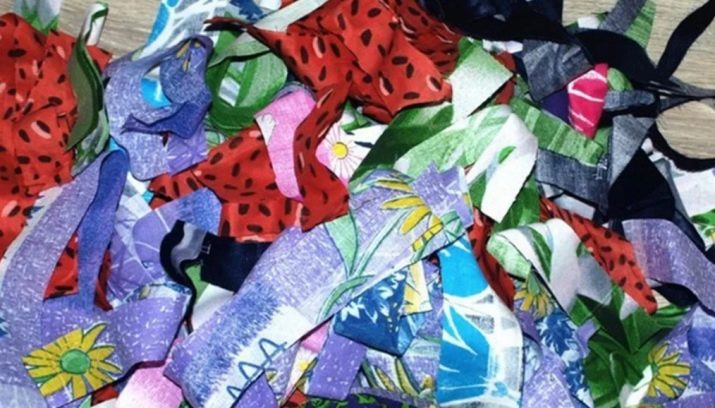
Patchwork blanks are not all, additional parts will come in handy, which can also be found in the closet or in the pantry. It can be laces, ribbons, yarn. You should also think about the base of the carpet, on which the elements will be located. It can be burlap, a rope can serve as an edging, just a piece of dense fabric. A very good base is obtained from the construction mesh. It allows you to use different materials and techniques to create your home masterpiece.

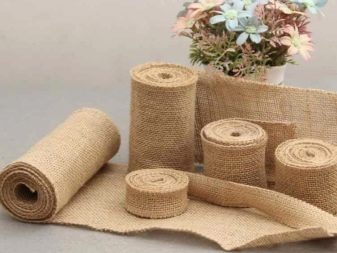
Manufacturing workshop
To sew a rug with your own hands (no matter what: complex with the use of new techniques or simple, reminiscent of a grandmother in a country house), you will need step-by-step instructions.
Consider how to weave a round rug from a pigtail. Such a scheme will be available for novice needlewomen who do not really like the sewing process itself.
- First, you need to prepare many long strips of fabric. Their number depends on the scale of the product. For the first time, you can opt for a small version, which, for example, could be placed at the front door.
- We take three long strips, sew them together and weave a long braid out of them in the usual way.
- At the end, we fix the ends and fold the pigtail to make a spiral. We do this on a flat surface so that it is comfortable and there are no distortions.
- Each circle of the spiral must be fixed on the reverse side with threads so that the whole structure is well kept.
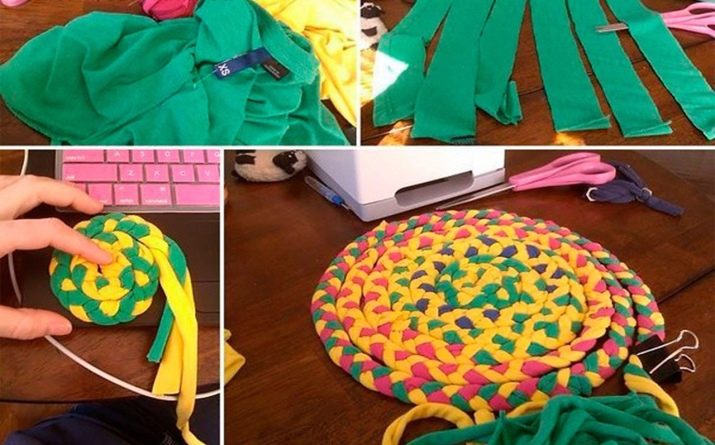
By the same principle, you can make a rectangular terry rug. Pigtails are woven from strips of old towels. Then they are fastened together. Along the edges, the entire structure can be sewn on a typewriter.
If you sew it to the base, it will be even stronger, an old towel can serve as its capacity.
This option will add coziness to the bathroom.
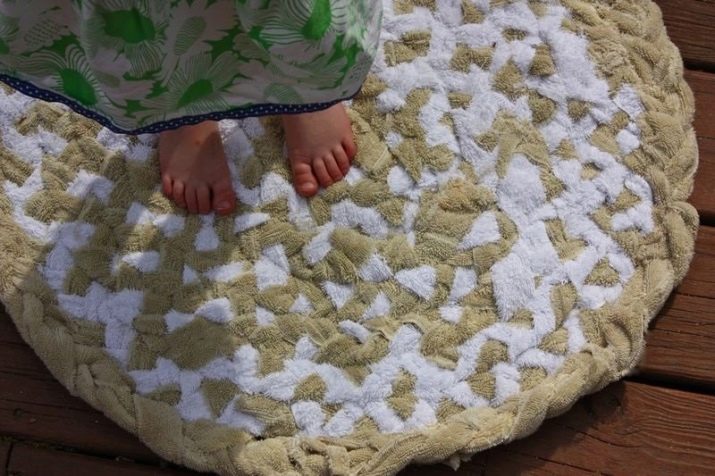
A rug made of knots will become an original decoration for any room.
- You will need a mesh as a base; you will also need blanks in the form of small strips of fabric.
- Each piece is placed under the mesh and pulled out from both sides with a hook.
- Next, you need to tie the ends in a knot. We carry out such manipulations with all the stripes, moving from cell to cell, until the entire base is filled.
- The result is an original fluffy rug.
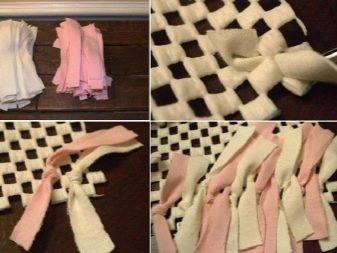
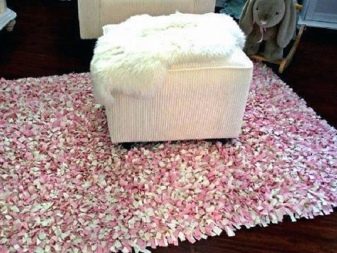
A very unusual and cozy rug can be made from soft balls. For their manufacture, in addition to fabric, you will need a filler, but you can also look for it at home. Maybe there are old jackets on padding polyester or pillows with blankets.
You can fill the balls with anything, as long as they are soft.
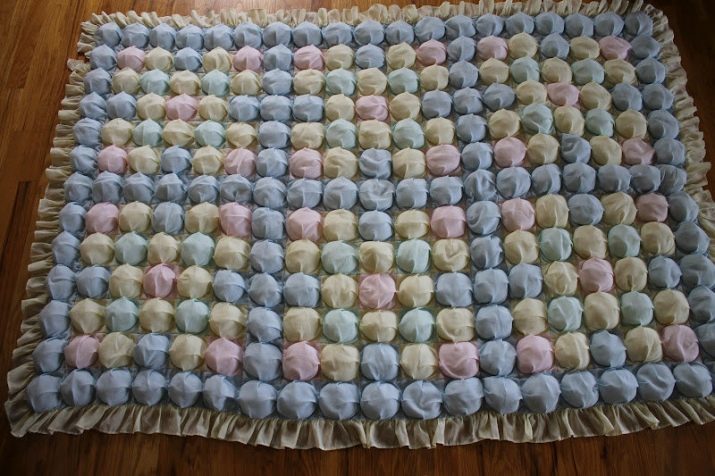
You can use old T-shirts as scraps.
- First, we make a template - we cut out a circle from cardboard. Then, on its basis, we make many circles of fabric.
- Next, quilt the blanks along the edge and tighten them slightly.
- After that, we place the filler in the resulting blanks and close the hole by pulling the thread.
- Then we take the base and sew the resulting soft balls to it or glue it with a glue gun.

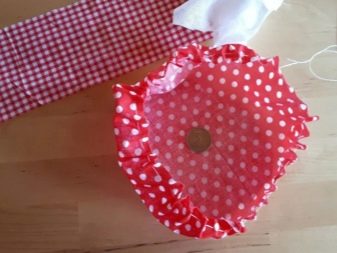

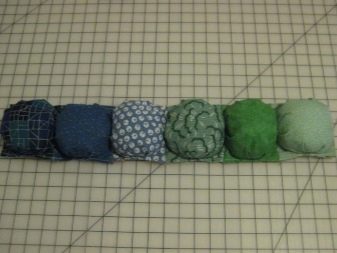
Using this technique, you can sew rugs that imitate the skin of animals or a surface from pebbles, create a simple pattern.

Another interesting option is a triangle rug.
- First of all, we prepare squares of the same size, then we fold each of them diagonally - we get a triangle.
- We attach the made corners to the base with pins, starting from the middle. Sew on the ends.
- Next, we make the next row and further in the same way, until we fill the entire canvas.
- Sew the last row along the edge and sew the edging.
The result is a lush rug. Using this technique, it is easy to make voluminous flowers.
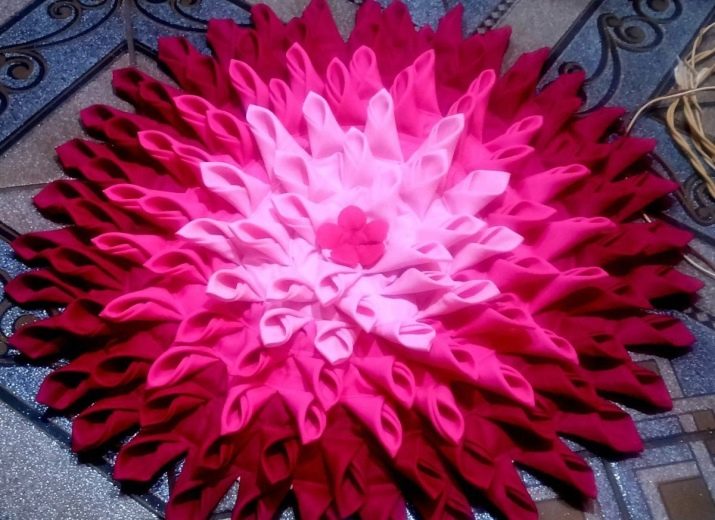
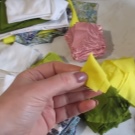
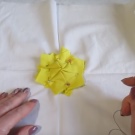
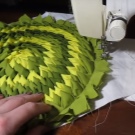

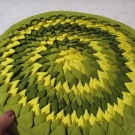
Examples in the interior
To have an idea of what a finished rug will look like on the wall, on the floor, or a cover on a chair or stools, it is best to look at ready-made original ideas.
- The round rug in blue and white will be an interesting addition to home decor in any room. In this case, it is harmoniously combined with wooden surfaces and a wicker basket for storing various little things.
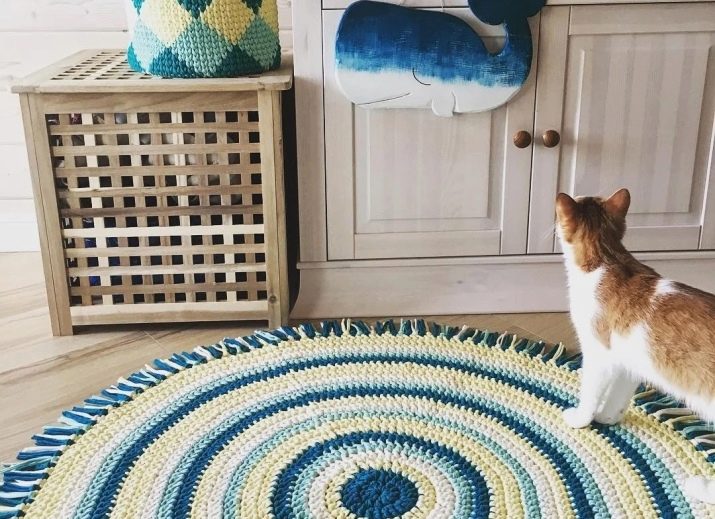
- Such a simple ornament can serve as the basis for a product that will decorate both the kitchen and the hallway and the bathroom.
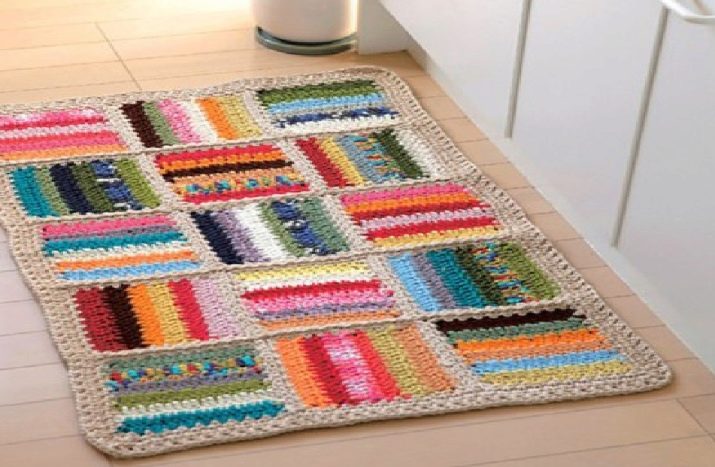
- The original volumetric rectangular or square rug can decorate both the nursery and the living room.It will look especially harmonious if these colors overlap with some other decorative elements, for example, a picture on the wall.
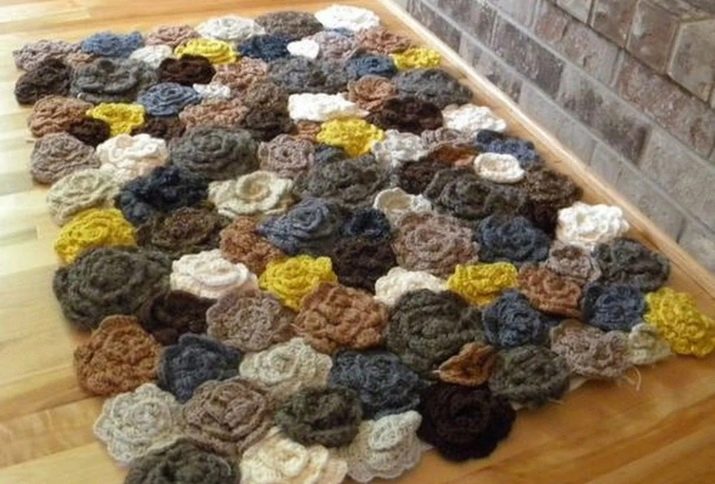
- This option will become a real expanse for kids. This ensemble looks soft, bright and cozy. Both the ottoman, the rug and the pillow are designed in the same style and technique of needlework.
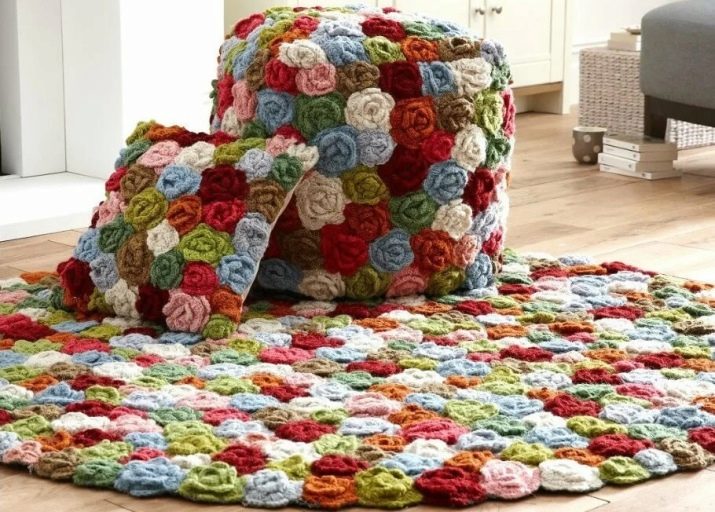
- A wonderful piece with imitation of colored pebbles will become a stylish accent to any corner of the room. Fresh flowers look especially harmonious next to it.

- This element of handicraft requires more skill and a creative look of a professional. But how it looks perfect against the background of the fireplace.
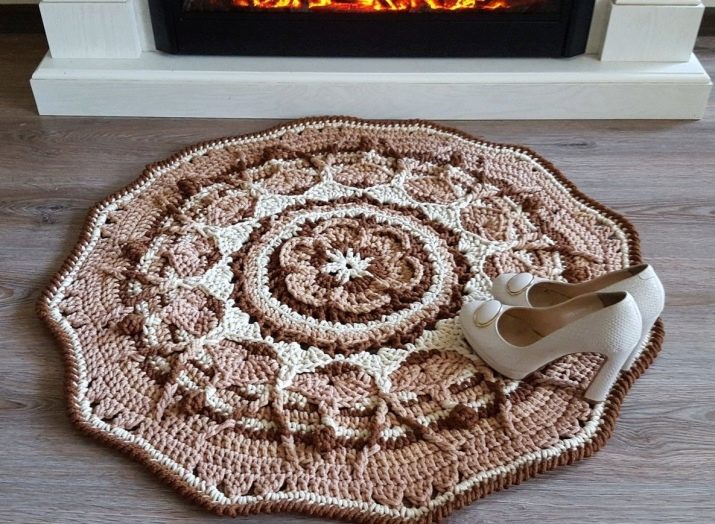
- And such a fluffy version perfectly matches the style of the hall where the fireplace is located. You can enjoy the cosiness and relax on such a soft carpet near the fire.
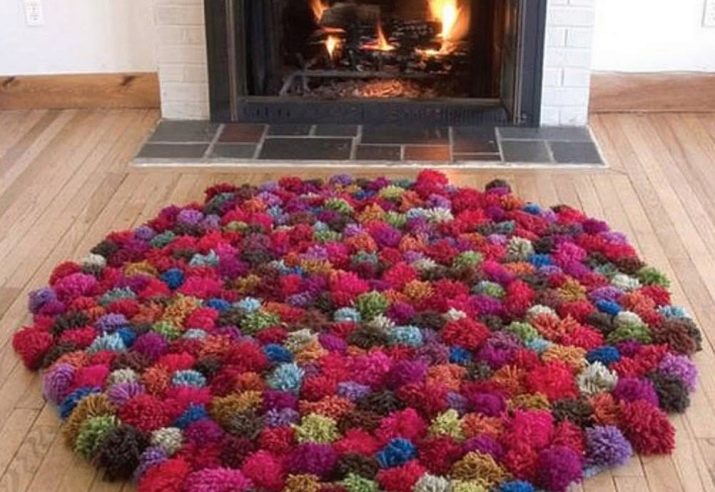
- A long path with bright various colors looks just gorgeous, but it also takes a lot of time to create. Behind such a masterpiece is painstaking work and, of course, a well-thought-out sketch and color scheme. This product combines different techniques.
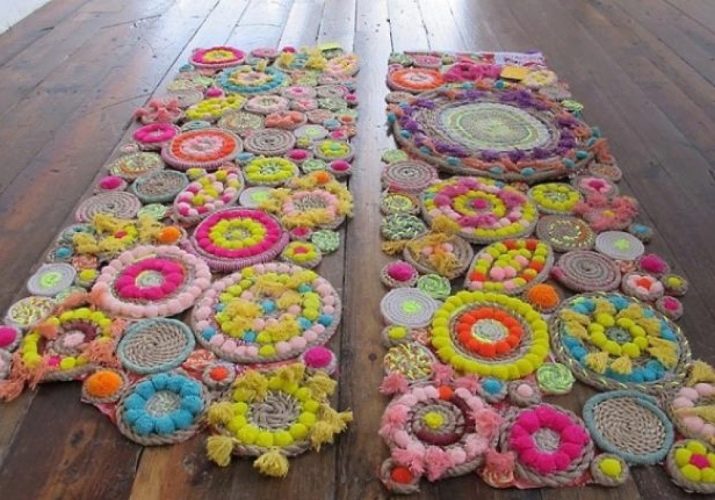
- Any child waking up in the morning will be glad to see such a bright fluffy meadow under his feet. It's nice to just relax and play on it.
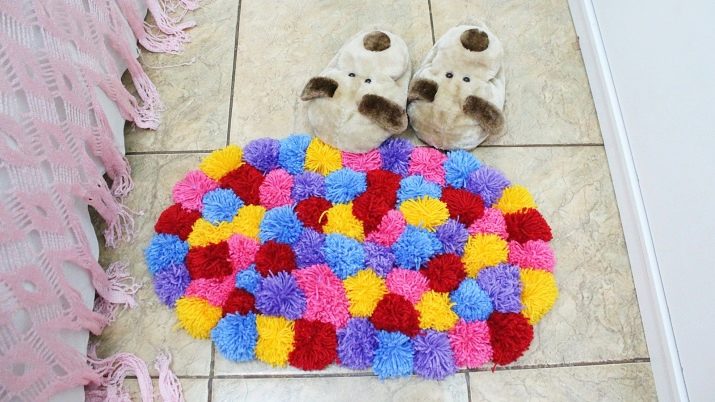
- It is not difficult for a real needlewoman to recreate the face of any animal. Such a product will cheer everyone up and create coziness in any room.
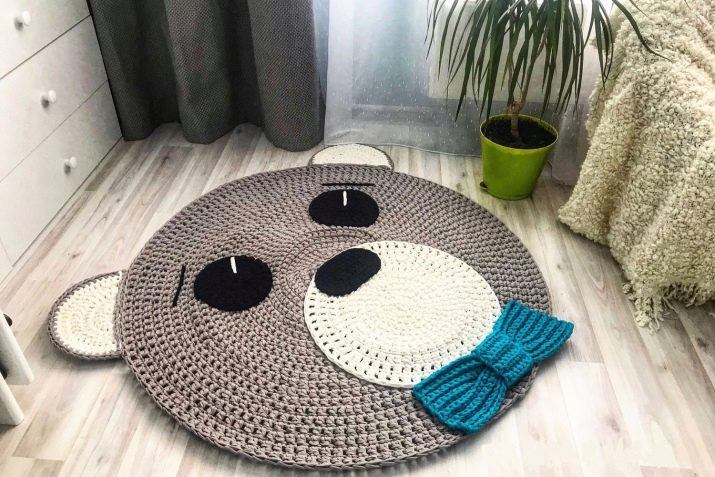
You can learn more about another interesting way of making a rug from scraps of fabric in the next video.








